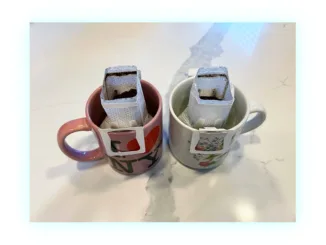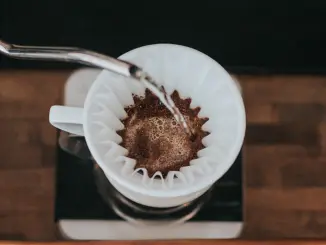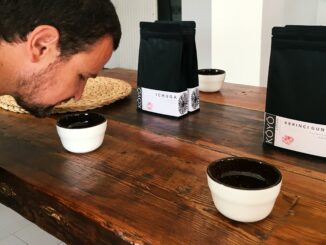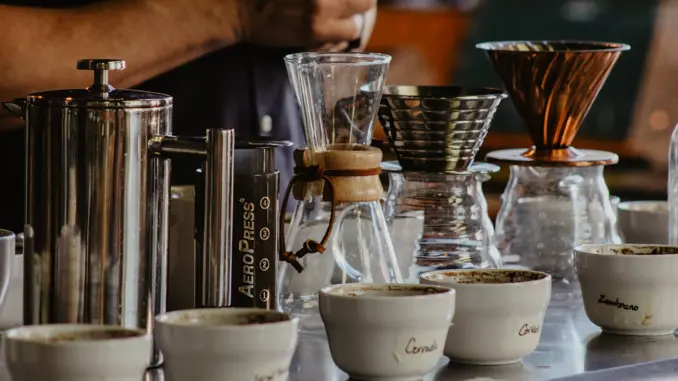
We explore the importance of finding the right ratio of water to coffee during the pourover process.
BY EMILY JOY MENESES
BARISTA MAGAZINE ONLINE
Photo by René Porter via Unsplash
In our “Achieving the Perfect Pourover“ series, we’ve been exploring how different aspects of the pourover process play a role in achieving a clean and balanced cup. In the first two parts, we delved into the intricacies of water temperature and grind size. In part three, we’ll focus on the importance of finding the right water-to-coffee ratio.
The Golden Ratio
When brewing pourover coffee, we often talk about the “golden ratio”—that means a water-to-coffee ratio of 1:16, or one part coffee to 16 parts water. This ratio can be slightly adjusted based on personal preferences and the characteristics of the coffee being brewed. Typically, you’ll want to stay within the range of 1:15 to 1:18.
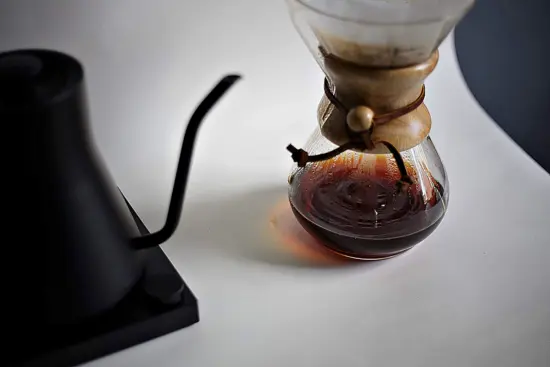
Why It’s Important
Your water-to-coffee ratio is important because it directly affects how flavors are extracted during the brewing process. For example, a higher ratio will result in a stronger, more concentrated flavor, whereas a lower ratio will produce a milder cup. Finding the right balance is essential to ensure a harmonious extraction that captures the desired characteristics of the coffee—such as acidity, sweetness, body, and subtle nuances.
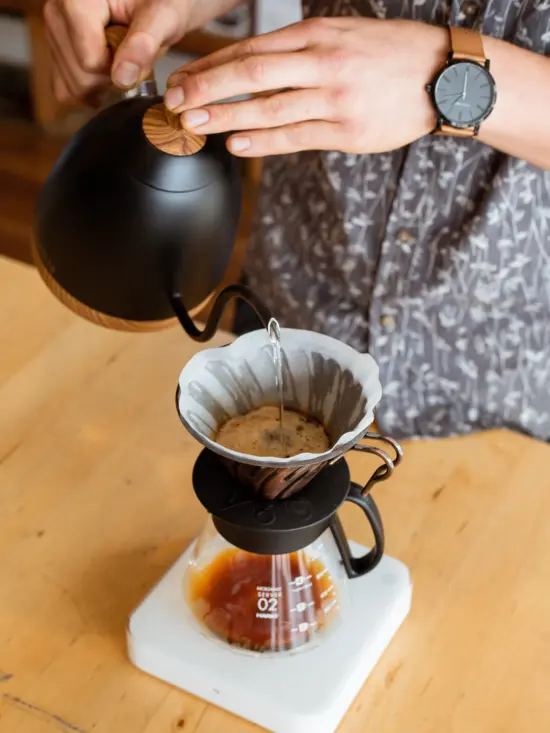
Over- and Under-Extraction
Using an incorrect water-to-coffee ratio can lead to over-extraction or under-extraction. Over-extraction occurs when too much coffee is used, causing the brew to become bitter, astringent, or even burnt. On the other hand, under-extraction arises from using too little coffee, resulting in a weak, watery cup lacking complexity and depth. Striking the right balance ensures an optimal extraction, maximizing the flavors while avoiding undesirable qualities.
Experimentation and Refinement
Discovering the ideal water-to-coffee ratio requires some experimentation. Start with the suggested golden ratio and adjust based on your personal taste preferences and the unique profile of the coffee you’re working with. Keep a record of your adjustments to refine your brewing technique over time and develop a recipe that consistently delivers a cup of coffee that you’re happy with.
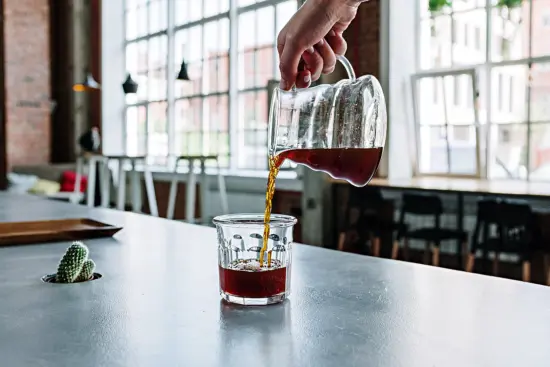
Photo by cottonbro studio via Pexels.
Finding the right water-to-coffee ratio is about finding the delicate balance between a bitter or weak brew. By understanding the importance of this ratio and embracing experimentation, you can unlock the true potential of your coffee, crafting a cup that reflects the unique flavors and subtle nuances of the beans you’re working with.
ABOUT THE AUTHOR
Emily Joy Meneses (she/they) is a writer and musician based in Los Angeles. Her hobbies include foraging, cortados, vintage synths, and connecting with her Filipino roots through music, art, food, and beverage.


